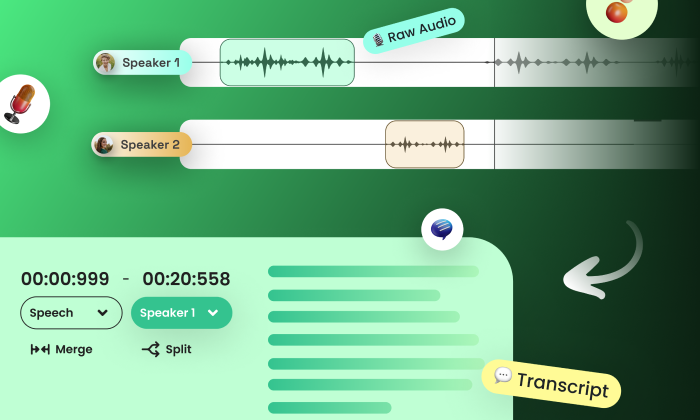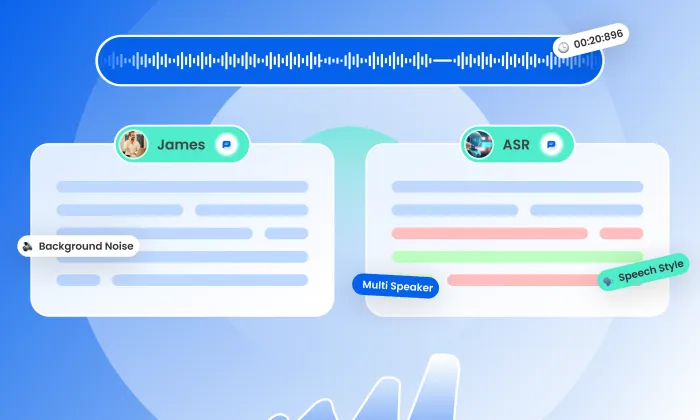What is false rejection in wake word models?
Wake Word
Voice Recognition
AI Models
False rejection occurs when a wake word detection system fails to recognize a correctly spoken wake word, classifying it as a non-trigger. This results in missed activations, user frustration, and reduced confidence in voice-activated systems. This guide outlines the technical nuances behind false rejections and practical strategies to minimize them using FutureBeeAI’s high-quality datasets and tooling.
Defining False Rejection (Type II Error)
A false rejection, also known as a Type II error, happens when a valid wake word—like “Alexa, play music”—fails to trigger the intended system response. Unlike false acceptances, which cause unintended activations, false rejections prevent legitimate interactions from occurring, directly impacting usability and performance.
Key Technical Nuances and Metrics
False Rejection Rate (FRR)
- FRR measures the percentage of valid wake words that are not detected
- Balanced with False Acceptance Rate (FAR) to maintain overall system reliability
- Evaluated through ROC and DET curves, providing insight into sensitivity and specificity trade-offs
Signal Detection Framework
- ROC and DET curves help visualize and select optimal thresholds
- Equal Error Rate (EER) reflects the point where FRR and FAR intersect, guiding model tuning
Data Quality Considerations
- Label noise from misannotated wake word segments inflates FRR
- Cross-validation with holdout sets ensures generalizability and reduces overfitting
- Data augmentation using noise profiles and room impulse responses improves robustness
At FutureBeeAI, our YUGO platform supports a 2-layer QA process that ensures annotation accuracy and reduces error propagation in training pipelines.
Impact on User Experience and System Reliability
High FRR negatively affects user confidence in voice-enabled devices. Users who consistently experience unresponsive systems are more likely to abandon them. In mission-critical applications like automotive voice control, missed wake words may also compromise safety.
Examples include:
- Smart homes where repeated command failures frustrate users
- Automotive interfaces where missed activations can delay actions in time-sensitive contexts
- Mobile voice assistants where inconsistency erodes trust and usage
Proven Mitigation Strategies
1. Diverse Training Data
Training with FutureBeeAI’s multilingual speech datasets, which include diverse speaker demographics and over 100 languages, improves generalization across accents and environments.
2. Adaptive Learning Systems
Implement continual learning loops that adapt to user-specific corrections and refine detection boundaries based on usage patterns.
3. User Feedback Integration
Leverage end-user feedback and interaction logs to identify and address recurring false rejection scenarios, including underrepresented phrases or dialects.
4. Environmental Noise Simulation
Use data augmentation to simulate background noise, reverberation, and varied acoustic conditions, preparing the model for real-world deployment.
5. Threshold Optimization
Continuously calibrate operating thresholds to maintain an ideal balance between FRR and FAR, guided by live performance metrics.
FutureBeeAI’s Role in Reducing FRR
Our data offerings are designed to strengthen voice AI systems:
- OTS and custom datasets available in WAV, 16 kHz, 16-bit mono format
- Rich metadata covering speaker age, gender, accent, and recording environment
- Validated transcription through a structured QA pipeline on the YUGO platform
Using our datasets, AI teams have achieved real-world FRRs below 1 percent in production settings, even across noisy or multilingual conditions.
Next Steps and Recommendations
To improve wake word model performance and reduce false rejections:
- Evaluate your model’s current FRR using cross-validation and structured test sets
- Enhance your training corpus with diverse and annotated data from FutureBeeAI
- Augment with simulated environmental noise to increase model resilience
- Engage with FutureBeeAI for custom collection and tuning support via Contact Us
What Else Do People Ask?
Related AI Articles
Browse Matching Datasets
Acquiring high-quality AI datasets has never been easier!!!
Get in touch with our AI data expert now!








